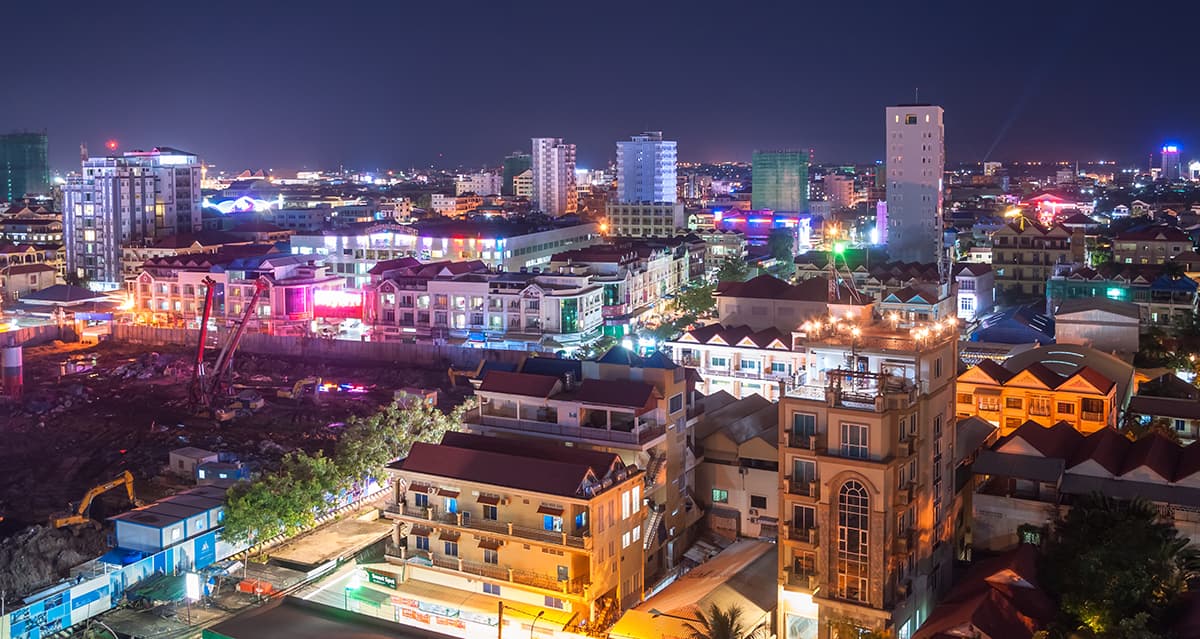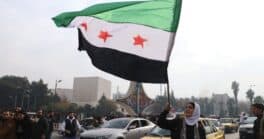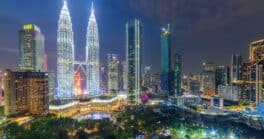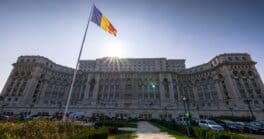Cambodia eyes a clean slate and full recovery from the pandemic in 2022.

|
VITAL STATISTICS |
|---|
|
Location: Southeast Asia |
|
Neighbors: Thailand, Laos, Vietnam |
|
Capital city: Phnom Penh |
|
Population (2021): 16,968,138 |
|
Official language: Khmer |
|
GDP per capita (2020): $1,512.70 |
|
GDP growth (2020): -3.1% |
|
Inflation (2020): 2.9% |
|
Currency: Cambodian riel |
|
Investment promotion agency: The Council for the Development of Cambodia |
|
Investment incentives available: Tax exemptions; tax holidays; special depreciation provisions; duty-free import of some equipment, materials, commodities and accessories; no restrictions on capital repatriation; special economic zones |
|
Ease of Doing Business rank (2020): 144 |
|
Corruption Perceptions Index rank (2020): 160 |
|
Political risks: Generally stable politically, but free speech is limited, and a large percentage of the population remains disenfranchised |
|
Security risks: Thefts, robberies and crimes of opportunity, commonly targeting foreigners; banditry in rural areas; poor road conditions; border dispute with Thailand; landmines in rural areas; unexploded ordnance |
|
PROS |
|---|
|
ADB working to help Cambodia deal with climate change |
|
New investment law, to increase competitiveness and attractiveness for investors, pending implementation |
|
Government very eager for FDI |
|
Government committed to infrastructure improvements |
|
100% foreign ownership allowed |
|
CONS |
|---|
|
Corruption |
|
Lack of transparency in some business procedures and government approval processes |
|
Limited supply of skilled labor |
|
Declining business freedom |
|
EU, Cambodia’s largest export market, partially suspended preferential trade treatment in 2020 citing the Cambodian government’s violations of human rights |
|
Sources: Canadian government Global Travel Advisory, The Diplomat, Heritage Foundation, International Monetary Fund, Khmer Times, Phnom Penh Post, Reuters, Transparency International, Unctad Investment Law Navigator, US State Department, World Bank, World Population Review, Xinhuanet.com |
|
For more information, check out Global Finance‘s Cambodia Economic Report data page. |
Cambodia presents a textbook example of a frontier market that enjoyed booming growth before the onset of Covid-19 and now labors to regroup its business environment and restore its economy. Annual growth in gross domestic product (GDP) in the preceding decade had ranged between 6.8% and 7.5% and absent the crisis would likely have continued on that trajectory. It competed aggressively with Vietnam for foreign direct investment and managed to be on good relations with both the Western powers and the People’s Republic of China.
Its aggressive growth had propelled it to lower middle-income status in 2015 and it aimed for upper middle-income status by 2030.
Cambodia had steered relatively clear of the Covid-19 pandemic until February 2021. Since the end of June, however, the number of confirmed cases had climbed from fewer than 500 to more than 50,000.
Over the same period, the nation has seen more than 40,000 recoveries and 602 deaths. Perhaps demonstrating its determination, Cambodia ranks second in its vaccination rollout among the Association of Southeast Asian Nations community, behind Singapore, after securing approximately 11 million doses of Sinopharm and Sinovac vaccines from China.
The Covid-19 crisis has caused severe economic damage: The World Bank estimates that Cambodia’s gross domestic product in 2020 contracted by 3.1% compared with 2019. According to a tourism ministry report published in late July, Cambodia attracted 91,596 foreign visitors during the first five months of 2021, down 92% from 1.17 million over the same period last year.
As of the end of July, approximately 44% of the population had been vaccinated.
The government target calls for 100% of the adult population to be immunized by year-end, according to Sunniya Durrani-Jamal, country director of the Cambodia Resident Mission of the Asian Development Bank (ADB) in Phnom Penh. The manufacturing sector is expected to recover quicker than the service sector.
Prior to the pandemic, tourism, garment exports and increased domestic consumption drove Cambodia’s economic growth.
Pre-pandemic net inflows of foreign direct investment (FDI) confirmed the country’s attractiveness. From 2000 to 2019, FDI increased from $118 million to $3.7 billion (approximately 2,900%), as blue-chip companies such as Burger King, Coca Cola, Deloitte, KFC, KPMG, Prudential Assurance and Starbucks mainly made “greenfield” investments in the country.
For the five years preceding the pandemic, the vast majority of FDI went to financial services (33%); garments, textiles and footwear (13%); accommodations (12%); real estate (12%); and agriculture (7%), according to ADB data.
According to an analysis assembled for Global Finance by the Washington-based Heritage Foundation, China has also been interested in Cambodia. Chinese FDI became a significant driver of growth.
The foundation’s analysis also suggests that Chinese businesses may not assess the challenges in Cambodia’s business environment using the same criteria as Western businesses.



